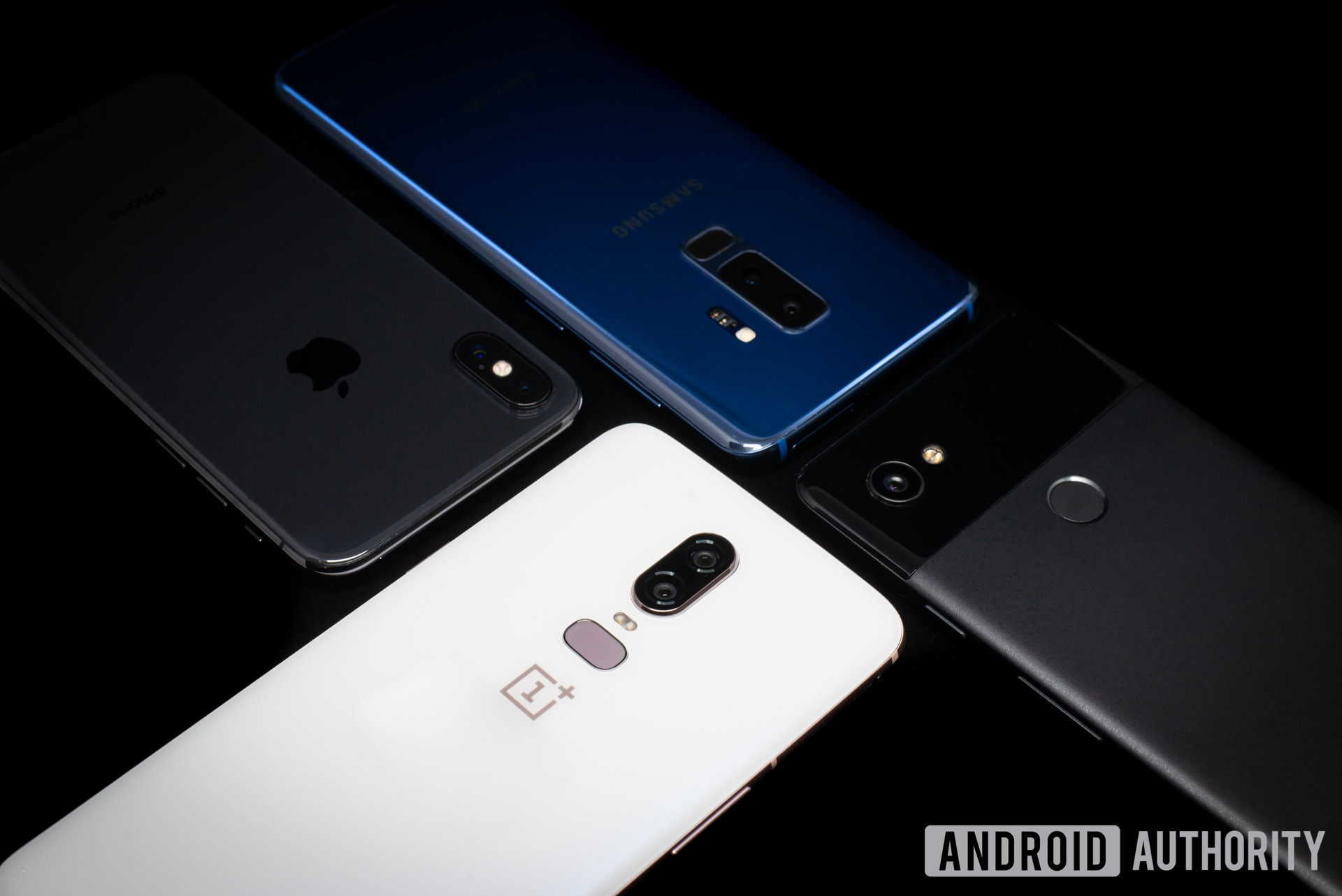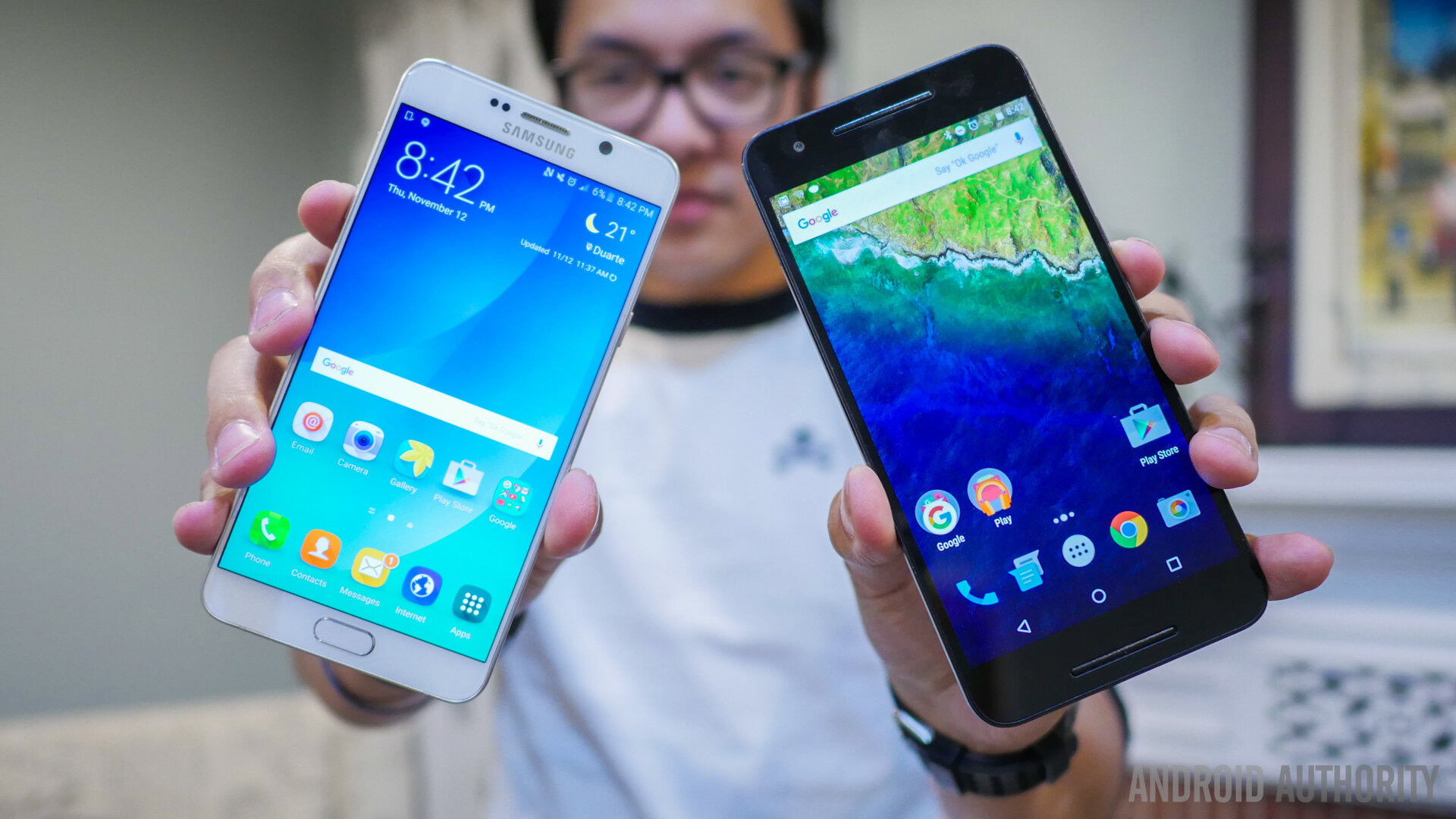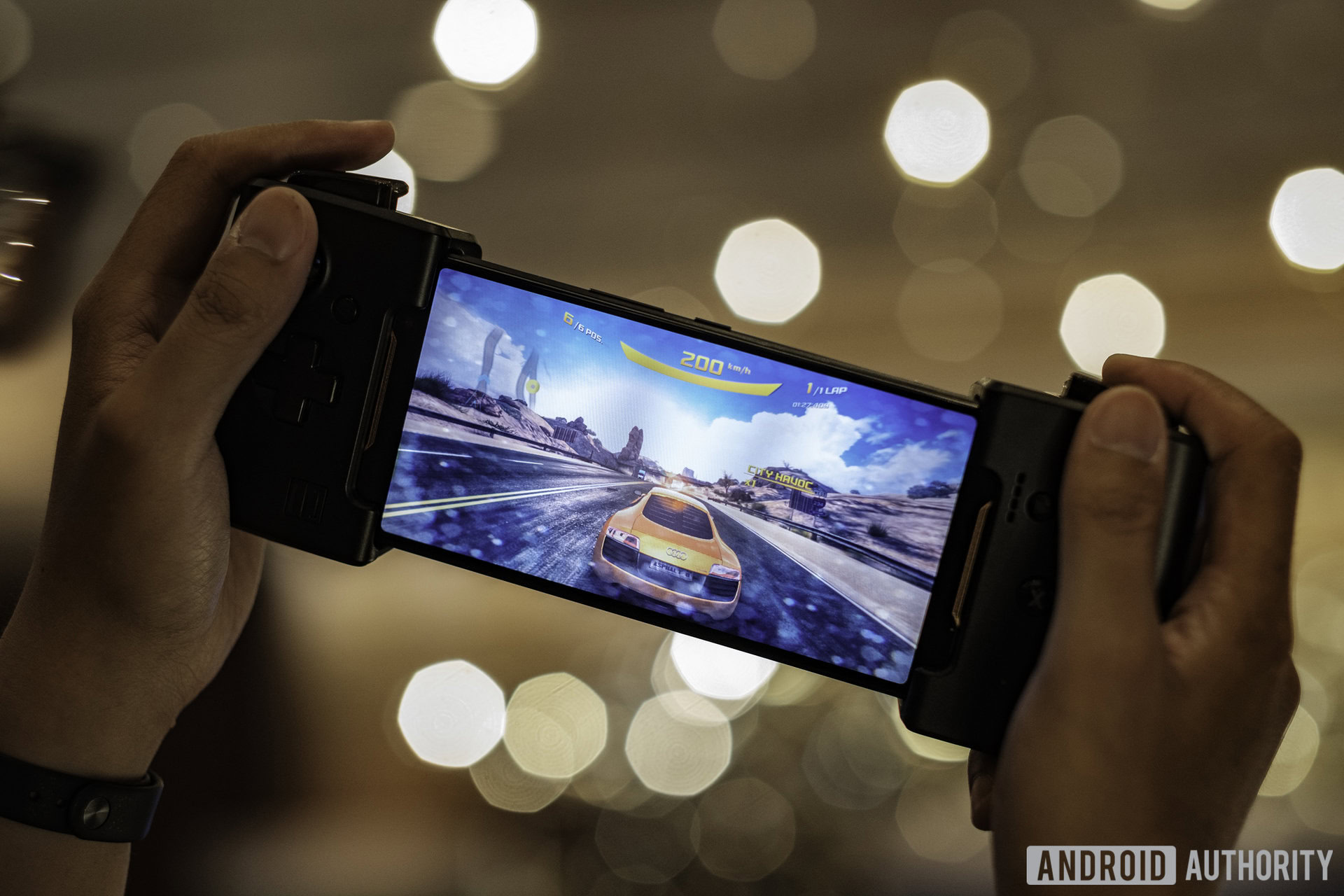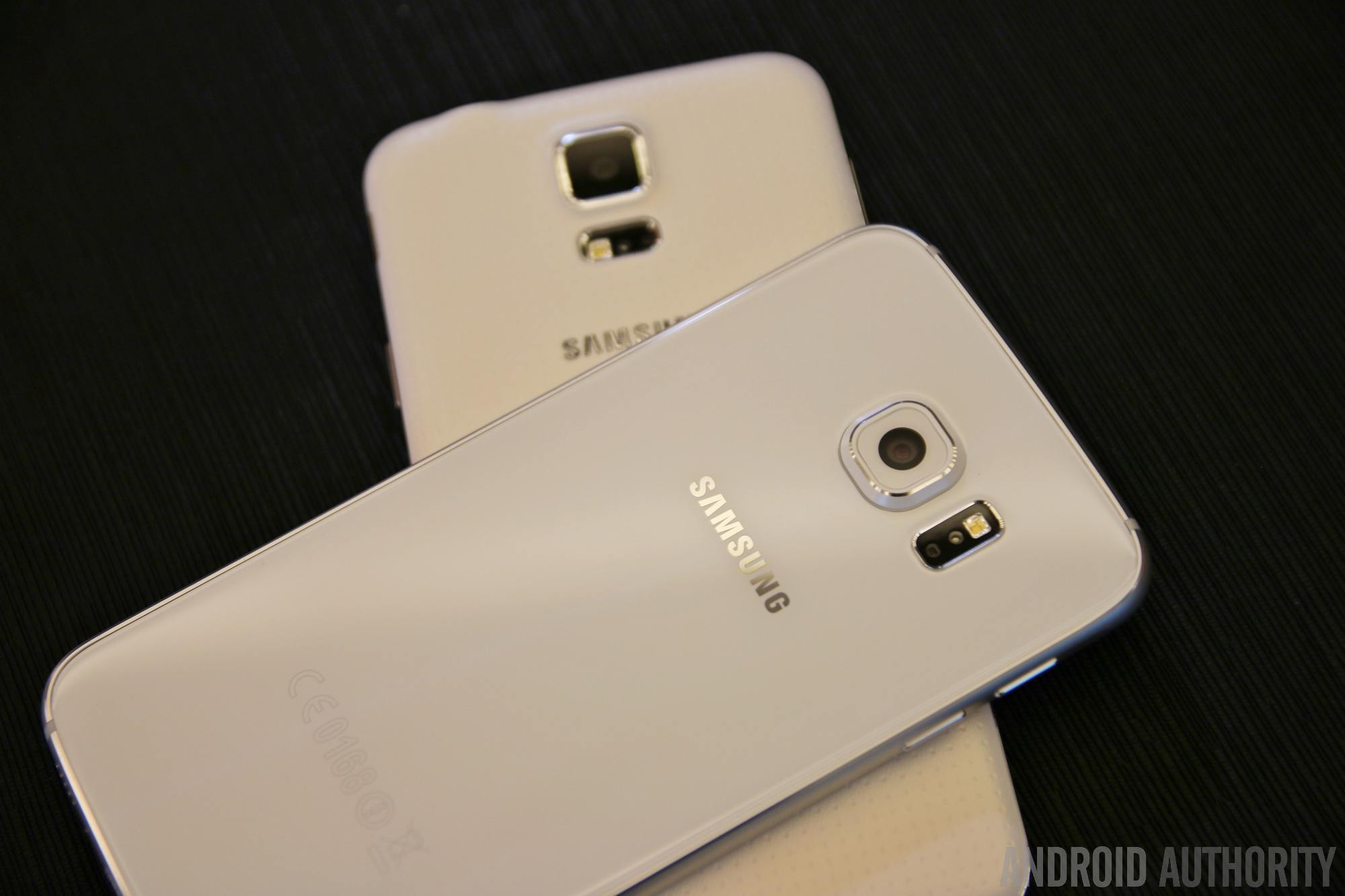Affiliate links on Android Authority may earn us a commission. Learn more.
When the Galaxy S9 doesn't sell: how flagship phones lost their magic

When was the last time you were genuinely excited about a new smartphone? It might have been awhile.
Don’t worry, the smartphone isn’t dying (duh). It’s just entrenched. After so many generations and improvements in software and hardware capabilities, most of us now have one that’s good enough. Growth in smartphone sales is, after an all-time run, finally getting the shakes. Saturation and fatigue have set in.
When was the last time a new smartphone gave you a feeling of passion?
Sure, there are great phones out there, and surprises that make us remember the passion we had for new devices, but they’ve become just another consumer good. Like TVs, cars, or laptops, flagships smartphones are now too expensive to just keep upgrading, the differences between brands are increasingly small, and true innovation is often mixed up with gimmicks. Holding on to your old device, while it lasts, is much more acceptable.
The smartphone market right now
We’ve known since late 2017 that flagship smartphone sales have been in decline. Even in Korea, sales of the latest Samsung Galaxy S9 weren’t flashy according to reports a few months ago. Samsung itself acknowledged in a first-quarter profit release that stagnant sales will inevitably impact profitability, specifically in the flagship tier. Financial analysts are predicting a slowing, albeit large, second-quarter profit from Samsung, notably due to S9 sales falling. The wobbles really look to have set it on the Galaxy S series line.
Look at the falling interest in the new flagships, even in the hugely popular Galaxy S line launches:
Smartphone sales across the board are generally flat. The one smartphone market still showing growth is at the lower end. Consumers in China and India are putting their buying power to use, chasing the plethora of value devices from Xiaomi, HONOR, Samsung, and Nokia.
Editor’s Pick: Here are the 10 most sold phones of all time — you’re in for a surprise
Among 30 new smartphones introduced in India already in 2018, the key points of differentiation were, according to Counterpoint Research, “attractive full-screen displays, high capacity batteries, and AI features like face recognition.”
In flagships at the high-cost end of the spectrum, the key points of differentiation have shifted. Every phone has a great screen and most flagships eke out small battery life improvements from one generation to the next. Camera performance will always be a crucial factor, but even though some stand out, flagships all perform well now.

Mid-range phones are better than flagships for usability
Mid-range phones even have an arguable edge on flagships for usability, offering rock-solid specs, nothing unnecessary and more conservative styling. They tend to avoid “features” like notches, missing headphone jacks, or early-generation under-screen fingerprint sensors, let alone motorized cameras.
The flagship review points that mattered just a few years ago no longer warrant much mention. If you’re not into high-performance gaming, most hardware above the low-end is perfectly capable of serving up a browser, messaging apps, YouTube, Gmail, Maps, Facebook, Instagram, Spotify, and Uber.
Even the very software itself is becoming less important. Most companies have wound back to a closer-to-stock Android approach, following the litany of complaints about the skins like TouchWiz, Xperia, EMUI, Sense, the demand to update software faster following Android OS updates, and pressure from Google.

Having a unique Android experience was once a key feature, now a clean and minimal experience with careful touches is appreciated more. Only phones marketed primarily for China, which offer an iOS-like experience, are genuinely questionable these days.
This means bezelless slabs are becoming normal, and the front of the screen of most new smartphones looks like any other. There is still enough to keep people interested, and even a number of surprises for the tech media to keep us going — take our review of the vivo Nex explaining just that — but the zeal for smartphones has edged towards more general consumerism, even for enthusiasts. There’s not much difference between devices beyond internal specs, price points, and any minor quibbles reviewers find.
Niches, notches, and innovation
Aside from having a notch or a headphone jack, some manufacturers are differentiating their products by targeting niches. LG is trying to corner the audiophile market with its LG V series devices, offering an included pair of B&O headphones and quality Quad DACs for superior audio. The Red Hydrogen One is a specialty phone for high-end video. Razer, Xiaomi, and Asus have specialty gaming phones with innovative features like 120Hz screens, or three USB-C ports and a cooling fan.

Then there’s some genuine next-wave innovation. We’ve seen this in the two latest BBK Electronics phones: the vivo Nex and the OPPO Find X. Both include mechanical sliders for pop-up cameras to minimize any bezel. However, this looks only like round one in the no notch, no bezel game.

These devices offer some unique selling points, but none of them are likely to solve the bigger issues. They’re all almost unrepairable, they’re expensive, and none of them are seriously built to last. Essentially, they’re built to encourage getting the next device.
Repairability is made much, much worse by the all-glass, sealed clam design trend in the flagship market. They break easily, fixing them on your own is next to impossible, and replacing any part can be expensive and difficult.
Why are we buying these glued glass shells?
So why do we keep buying them? We wrote earlier about the lingering love for the last of the fixable Samsung Galaxy phones, the Galaxy S5 (and the Note 4). The plastic back gave way to the all-glass solution, an aesthetic improvement that removed swappable batteries, added the fragile edge screen, and after the S6, added waterproofing by gluing the glass together.

There’s a real groundswell of enthusiasm for a phone that isn’t sealed glass — one that can open, sacrifices sex appeal for usability, and might even be polycarbonate. Cargo pants are not at all cool, but they’re useful, practical, and fulfill a market demand.
We're suckers.
Flagships still sell because we’re suckers. We can’t help but like shiny and new. Marketing the desire to have the latest and greatest is an age-old tactic that works. Part of it is also down to upgrades built into your contract with a carrier, the most common route. Who turns down a “free” upgrade?
Even these angles might not be the full story. Maybe it’s just price — a $1,000 barrier to entry means you’ll either consider buying for value, or not upgrading as quickly, as the replacement cycle lengthens.
We here at Android Authority recently discussed how our bezel-less phone future might have a ready analogy in the flat panel TV market. There’s no passion in the TV sphere for consumers anymore; they’re anonymous, interchangeable, and gimmicks like curved TVs and 3D tried and more or less failed to sell. TVs are dominated by tricky acronyms like Super UHD, HDR 10+, QLED, OLED, and hardware not supported by much content.
Smartphone gimmicks: just that, or something more?
Manufacturers are trying plenty of gimmicks as well, like pop-up camera sliders, HTC’s Edge Sense, dual-cameras morphing to triple-cameras, FaceID, and AR emoji. Some of these are improvements to the status quo like FaceID and Edge Sense. Some, like the notch or animoji, seem more like true gimmicks.

Other good ideas, like VR, just haven’t quite caught on. Bold choices like the LG G5 and its “Friends” tanked badly. Niche offerings can’t bring the industry out of a declining interest in smartphones — the more specific a thing is, the fewer people it appeals to.
Now more than ever, it’s about what a phone and what the ecosystem can do for you. Smartphones have mostly been perfected in terms of displays, buttons, batteries, cameras. They’re integrated with us and as long as they don’t fail, their key differences are becoming far less major.
Expect reviews offering more insight into what a smartphone can do for you, and less attention on specs
Smartphone reviews and attention is going to shift away more and more from running through a list of specs, battery life, and capabilities more towards what the smartphone can do for you.
Apple’s been marketing in this way for years and managed to show that its phones can do what most people want most of the time, and recently, how protected your privacy is at the same time. However, even Apple is moving away from relying on hardware sales, emphasizing its accessories, services, and even ad sales.
What’s next?
It’s difficult not to come away from these thoughts feeling a little morose about the smartphone industry, but this is a natural stage in any technology’s development — this one just happens to be arguably the most successful of all time.
Smartphones aren’t going away. As the breadth of improvements from generation to generation narrows, it’s going to take thus far unseen innovation to create a fresh cycle of massive growth.